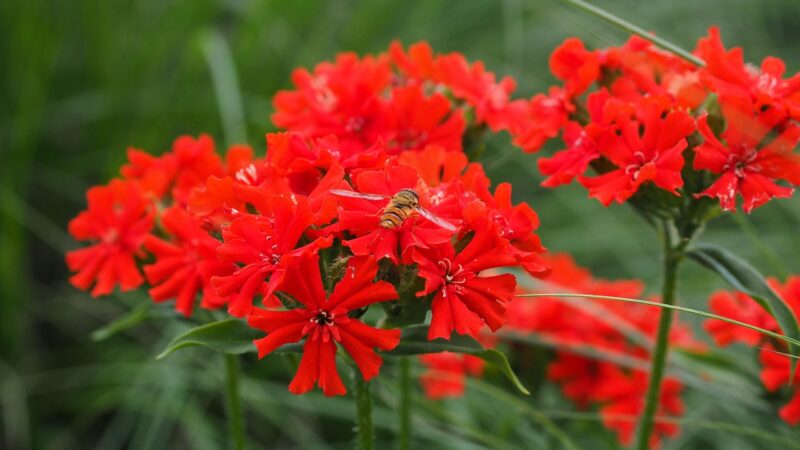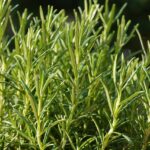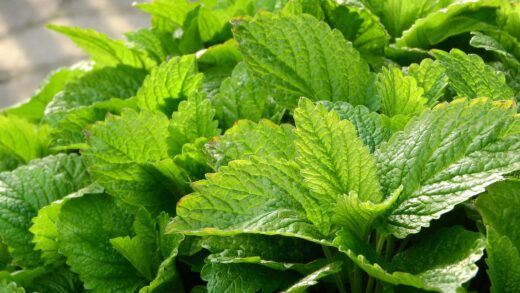Wintering of Maltese cross

The Maltese cross is a hardy perennial, well-equipped to handle the rigors of winter in many climates, but a little preparation can go a long way in ensuring its robust return in the spring. Proper winter care primarily involves tidying up the plant after the growing season and providing a protective layer against the most extreme cold, especially in colder regions. Understanding how to prepare this plant for its dormant period will safeguard your investment and reward you with a vigorous and healthy specimen ready for another season of spectacular blooms. The process is simple and requires just a few steps in the late autumn.
Preparing for dormancy
As the vibrant colors of summer and autumn begin to fade and the temperatures start to drop, the Maltese cross will naturally begin to prepare for its winter dormancy. The plant’s growth will slow down, and the foliage will start to yellow and die back, particularly after the first few hard frosts. This is a normal and essential part of the plant’s life cycle, as it directs its energy away from the top growth and down into its root system, which will sustain it through the cold months. It is important to allow this process to happen naturally rather than cutting the plant back prematurely.
Once the foliage has been completely killed by a hard frost and has turned brown or black, it is time for the autumn cleanup. Using a clean, sharp pair of pruning shears or scissors, cut the dead stems and foliage back to about two to three inches above the ground. This practice serves several important purposes. It tidies the appearance of the garden bed for the winter, removing a potential hiding place for slugs and other pests. It also helps to prevent fungal diseases from overwintering in the decaying plant material and reinfecting the plant in the spring.
After cutting the plant back, it is essential to clear away all the removed debris from the garden bed. Do not simply leave the dead foliage on the ground, as this can create a damp mat that promotes rot around the crown of the plant and provides a perfect habitat for overwintering pests and disease spores. This debris should be added to a compost pile, unless it showed signs of significant disease during the growing season, in which case it is safer to dispose of it in the trash to avoid contaminating your compost.
The final step in preparing the plant for dormancy is to ensure the area around its base is clean and weed-free. Weeds can compete with the plant for resources even as it enters dormancy and can harbor pests. A clean garden bed not only looks better but also reduces the potential for problems in the following year. This simple autumn cleanup sets the stage for a healthy dormant period and a strong start in the spring.
More articles on this topic
The role of mulching
Mulching is one of the most beneficial things you can do to help your Maltese cross successfully overwinter, especially in regions that experience harsh winters with freezing temperatures and fluctuating conditions. After the ground has frozen for the first time, apply a layer of organic mulch, about two to four inches deep, over the crown of the plant. Suitable mulching materials include shredded leaves, straw, pine needles, or shredded bark. The purpose of this winter mulch is not to keep the ground warm, but rather to keep it consistently frozen.
The main danger that winter mulch protects against is the cycle of freezing and thawing that can occur during the winter. When the ground repeatedly freezes and thaws, it can cause the soil to heave, which can lift the plant’s roots out of the ground, exposing them to cold, drying winds and potentially killing the plant. A consistent layer of mulch acts as an insulator, moderating the soil temperature and preventing this damaging heaving action. This provides a stable environment for the dormant roots throughout the winter.
It is crucial to wait until after the first hard freeze to apply your winter mulch. If you apply it too early, while the ground is still warm, it can trap heat and moisture around the crown of the plant, which can lead to rot and fungal diseases. It can also provide a cozy winter home for voles and mice, which may then feed on the plant’s crown and roots over the winter. Waiting for the ground to freeze ensures the plant is fully dormant and discourages pests from taking up residence.
In the spring, as the threat of hard frosts begins to recede and you see the first signs of new growth emerging from the base of the plant, it is time to remove the winter mulch. Gently rake the mulch away from the crown to allow the new shoots to receive sunlight and to let the soil warm up more quickly. You can either remove the mulch from the bed entirely or spread it out more thinly around the plants, where it will continue to offer benefits such as weed suppression and moisture conservation as a summer mulch.
More articles on this topic
Care in different climate zones
The hardiness of the Maltese cross makes it a reliable perennial in a wide range of climate zones, typically thriving in USDA zones 3 through 9. In the more temperate parts of this range, such as zones 6 to 9, the plant generally requires very little special winter care. The autumn cutback is usually sufficient to see it through the relatively mild winters. A layer of mulch is still beneficial for moderating soil temperatures and suppressing weeds, but it may not be as critical for survival as it is in colder climates.
In the colder end of its hardiness range, specifically USDA zones 3 to 5, providing winter protection becomes much more important. In these regions, the temperatures can drop significantly, and a protective layer of snow cover cannot always be relied upon. Following the autumn cutback, applying a generous layer of mulch after the ground freezes is a highly recommended practice. This insulation is key to protecting the root system from the extreme cold and the damaging effects of frost heave.
In very warm climates, such as the upper end of zone 9 or warmer, the Maltese cross may behave differently. In areas with no frost, the plant may not enter a full dormancy period and can remain semi-evergreen throughout the winter. In these regions, the primary winter care involves simply tidying up the plant by removing any dead or yellowing leaves to maintain its appearance. The plant may slow its growth during the cooler months, but it will not require the same level of protection as plants in cold climates.
For plants grown in containers, winter care requires special attention regardless of the climate zone. The soil in pots freezes much more quickly and completely than the soil in the ground, making the roots far more vulnerable to cold damage. In colder climates (typically zone 6 and below), container-grown Maltese cross should be moved to a sheltered location, such as an unheated garage, a shed, or a cold frame for the winter. The goal is to keep the roots cold and dormant but protected from the harshest temperature extremes. The soil should be kept only very lightly moist throughout the winter.
Spring revival and emergence
As winter begins to wane and the days grow longer and warmer, you can start to anticipate the re-emergence of your Maltese cross. The first signs of life will be the small, green shoots of new growth appearing at the base of the plant, pushing up through the soil. This is the signal that the plant has successfully overwintered and is breaking dormancy. The timing of this emergence will vary depending on your specific climate zone and the weather conditions of the particular year.
Once you see this new growth, it is time to complete the final steps of winter care. If you applied a heavy winter mulch, this is the time to gently pull it back from the crown of the plant. This allows sunlight to reach the new shoots and helps the soil to warm up, encouraging more vigorous growth. Be careful when raking or cultivating around the emerging plant, as the new shoots are tender and can be easily damaged.
This is also the perfect time to provide the plant with its annual feeding. Apply a layer of compost or a balanced, slow-release granular fertilizer around the base of the plant, being careful not to place it directly on top of the emerging crown. This spring feeding will provide the essential nutrients the plant needs to fuel its rapid growth and to develop strong stems and an abundance of flower buds for the upcoming summer display.
As the new foliage begins to grow and fill out, you can sit back and watch as the plant transforms from its dormant state into the lush, vibrant specimen that will soon grace your garden with its fiery blooms. The spring revival is a testament to the plant’s resilience and the effectiveness of proper winter preparation. By providing this simple seasonal care, you ensure the cycle of growth and bloom continues year after year.


















